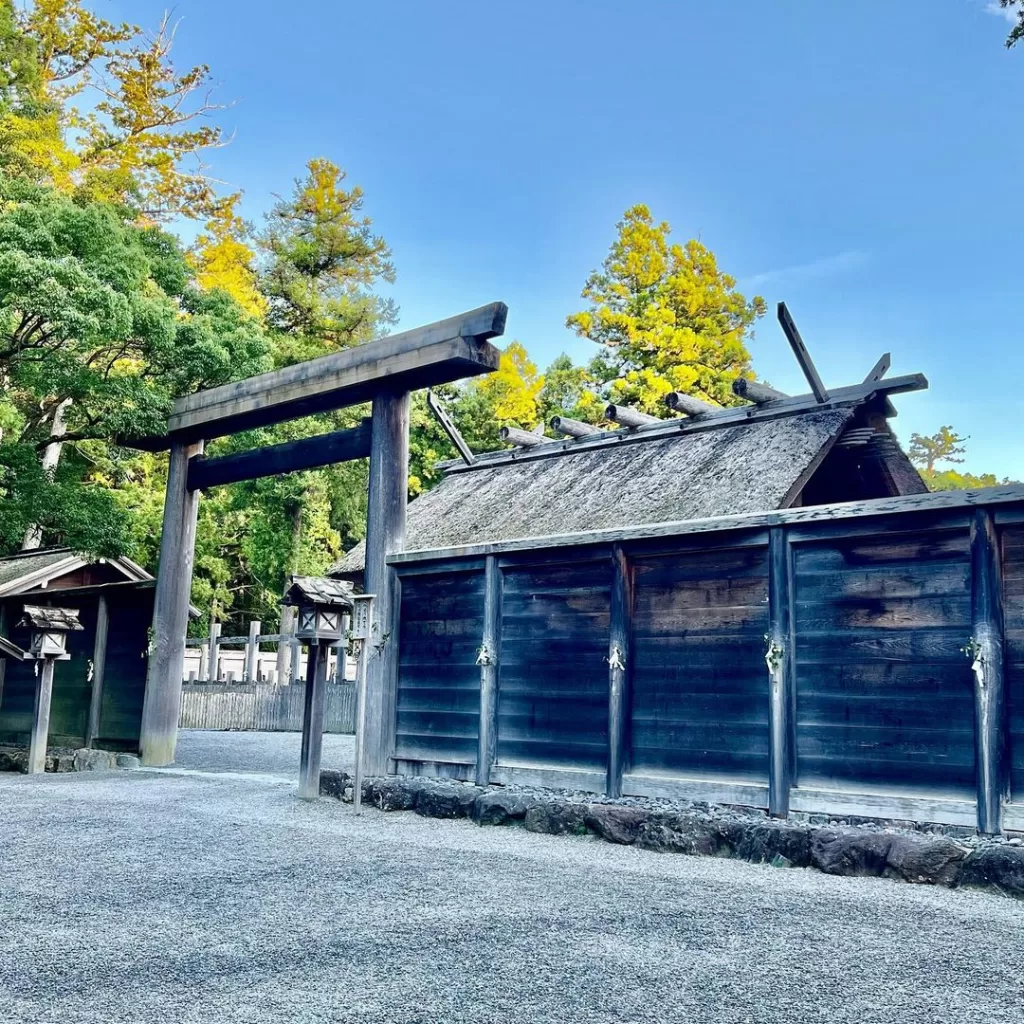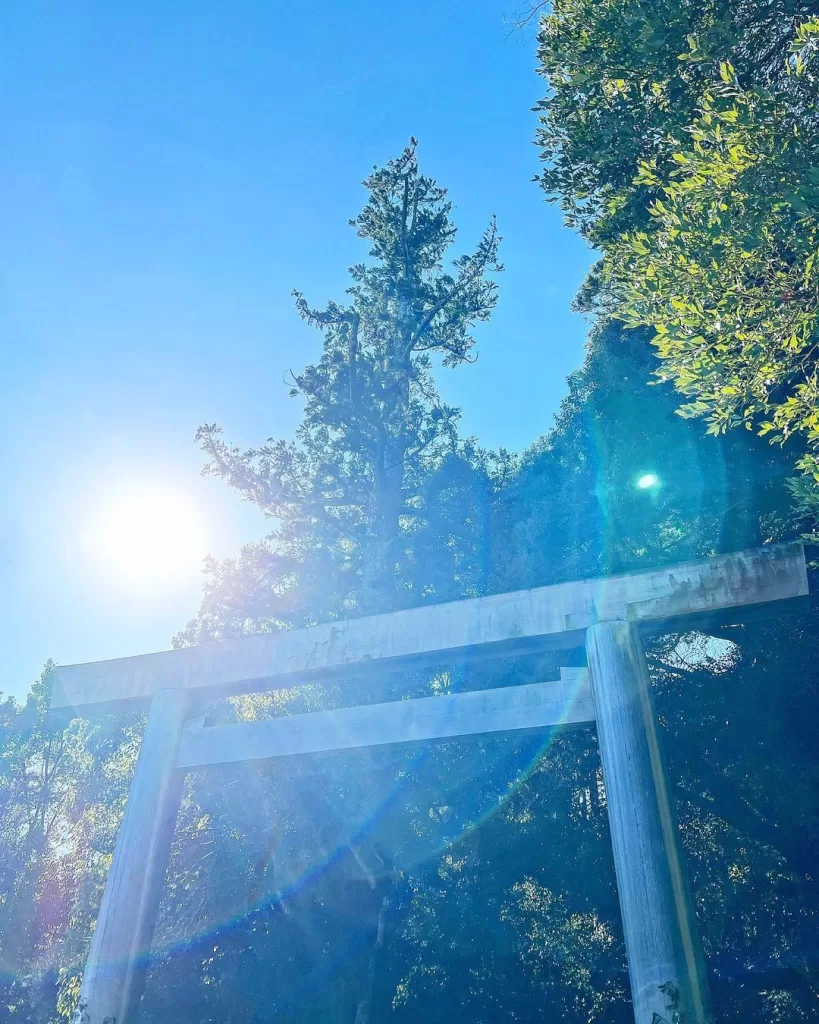Ise Grand Shrine: Japan’s Most Sacred Shinto Sanctuary
Everything You Need to Know about Ise Grand Shrine
Ise Grand Shrine: An Overview
Ise Grand Shrine, also known as Ise Jingu, is Japan’s most sacred Shinto shrine in the city of Ise in Mie Prefecture. This sacred site, home to the sun goddess Amaterasu, consists of multiple shrines across Ise City.
The shrine complex is divided into two main parts: the Inner Shrine, or “Naiku,” and the Outer Shrine, or “Geku.” Naiku is the most important of the two, enshrining Amaterasu Omikami, the sun goddess. Geku, on the other hand, glorifies Toyouke no Omikami, the deity of industry and daily food.
The History and Background of Ise Grand Shrine
According to the “Chronicles of Japan,” one of the earliest works of classical Japanese history, Ise Jingu was built around 4 BCE upon the instruction of Emperor Tenmu. It is believed that during this time, the Sacred Mirror (one of Japan’s three Imperial Regalia) was relocated from Atsuta Shrine in Nagoya to this place. That makes it not just a shrine but also a national symbol housing an item that signifies the Emperor’s legitimacy.
Moreover, what makes this sacred Shinto shrine unique from all other shrines across Japan is its tradition of rebuilding. Every 20 years, in a process known as “Shikinen Sengu,” it gets completely rebuilt from scratch to renew its spiritual energy.

Visiting the Inner and Outer Shrines
To reach both Naiku and Geku, you’ll typically pass through a Torii gate marking the entrance into a sacred space. Ancient trees shade both shrines and give off an air of tranquillity and timelessness.
In Naiku or inner shrine, visitors cannot access its central area as it remains hidden behind wooden fences, A constant reminder that, first and foremost, it is a place of worship for Shinto Deities. Notable structures include Kotai Jingu, where Amaterasu Omikami is enshrined; Kaguraden, where rituals are conducted; as well as Uji Bridge, which marks your transition from common land to divine territory.
The outer shrine- Geku, is less visited but offers equally soothing surroundings with fewer crowds and several subsidiary shrines. Here resides Toyouke Omikami- a goddess presiding over food, clothing, and shelter.

Rebuilding Tradition at Ise Grand Shrine EVERY 20 Years
One of the fascinating aspects of Ise Jingu is its rebuilding ritual every two decades called “Shikinen Sengu.” This custom gives life to an old shrine while maintaining connections with tradition going back centuries. The site alternates between new shrine construction followed by the deconstruction of the old one- after transferring spirits between them in an elaborate ceremony. The Cypress wood used in these constructions is strictly sourced from trees grown within precincts purposed for this ritual since ancient times.
While some interpret this act as symbolic of the concept of death and rebirth- cyclical passage of time; for others, it represents continuous renewal, signifying ever-evolving Shinto thoughts staying compatible with changing societal dynamics
Traveling to Mie Prefecture for a Trip to Japan’s Most Sacred Shinto Shrine
A visit to Mie Prefecture isn’t complete without seeing one of Japan’s most revered sites- Ise Jingu Shrine. It’s not far from Nagoya; you can take a direct train from here to reach Ise city.
When arriving at either Naiku or Geku, you will generally begin at the Torii gate before proceeding through an elegant natural path leading up to the main sanctum- welcoming you into a world-way set apart from worldly concerns residing outside these premises.
Don’t forget to appreciate the reverence involved in paying respects here- usually involving bowing twice, clapping hands twice, followed by a bow once more
Remember, apropos dress code respects the sanctity attached to these places. Refrain from photography inside separate areas enclosed by fences, indicating their scared status.
Whether matter your religious beliefs or spiritual inclinations, Untimely feelings experienced upon visiting these holy terrains would be universal for all-Time Stops Here!
The Significance of Visiting Ise Jingu
While thousands visit, everyday followers perform annual pilgrimages ranging across single working adults sparing time amidst tight schedules or elders fulfilling their lifelong dreams making visits towards the end of the days.
Some prominent guests include members of the imperial family who frequently use services by special resident priestess at the inner Naiku shrine for performing crucial rituals that hold national significance.
Teeming with historical importance, holding utmost religious significance, and being an emblematic site exhibiting the country’s deep-rooted traditional values beckons individuals across the spectrum!
But no one leaves untouched by the serenity permeable here during their lingering walks taken under the century-forest canopy leading the way towards the main sanctums, whistling symphony orchestrated by monumental trees standing as timeless witnesses guarding these spirits within their sanctuary.
Mysterious Aura Behind One Of The Oldest Structures In Japan
Hidden away among thick greenery-covered trails invoking a sense of serenity dating back over millennia-the elusive aura prevails upon stepping into the sacred grounds of the home of the most prestigious Shinto deity, overlooking the serene river called Isuzu, running right through its territory, laying route towards the iconic Uji Bridge.
Unable to peer inside restricted compound wherein hides most important structure within-Jingu holding divine mirror marked by white symbolic paper folded zigzag manner aside curtained wooden structure only accessible during ceremonial times.
During regular days, dainty drapes dancing rhythmically blown winds greeting passersby alongside devout worshippers seeking divine comforts remain a sight to behold for lovers’ mysteries past times.
Without a doubt, its memories etched during experiences forging unprecedented emotional connections attracted back, often leaving imprints in hearts forever!
Finally, what leaves visitors enamored is the enduring mystery shrouded behind simplicity essence imbibed teachings appreciating bare essentials of life, which exhibited prominently quiet ambiance, soundless prayers, minimalistic architectural designs preserving purity and simplicity-
Herein purity appears timeless, stunningly beautiful kind!!!
FAQs – Ise Grand Shrine
1. What is the Ise Grand Shrine?
The Ise Grand Shrine or Ise Jingu is Japan’s most sacred Shinto shrine. It consists of two main shrines, the Naiku (Inner Shrine) and Geku (Outer Shrine), which are located in the city of Ise, Mie Prefecture.
2. How often is the Ise Grand Shrine rebuilt?
The Ise Grand Shrine is rebuilt every 20 years according to the Shinto tradition. This process of reconstruction is known as Shikinen Sengu, and it involves rebuilding the shrine buildings using traditional techniques and materials.
3. What is the significance of the Ise Grand Shrine?
The Ise Grand Shrine is dedicated to the sun goddess Amaterasu, who is highly revered in Japanese mythology and is considered the ancestral deity of the Imperial family. It is a place of worship and pilgrimage for Shinto followers.
4. How many shrines are there in the Ise Grand Shrine complex?
The Ise Grand Shrine complex consists of 125 shrines in total. The Naiku and Geku are the main shrines, but the complex also includes various auxiliary shrines and buildings.
5. What is the sacred mirror of the Ise Grand Shrine?
The sacred mirror, known as the Yata no Kagami, is one of the three sacred treasures of the Imperial family of Japan. It is believed to be housed in the inner sanctum of the Naiku, although it is not publicly accessible.
6. Can anyone visit the Ise Grand Shrine?
Yes, anyone can visit the Ise Grand Shrine. It is open to the public, and visitors are welcome to explore the outer grounds of the shrine complex, which include beautiful gardens and architectural structures.